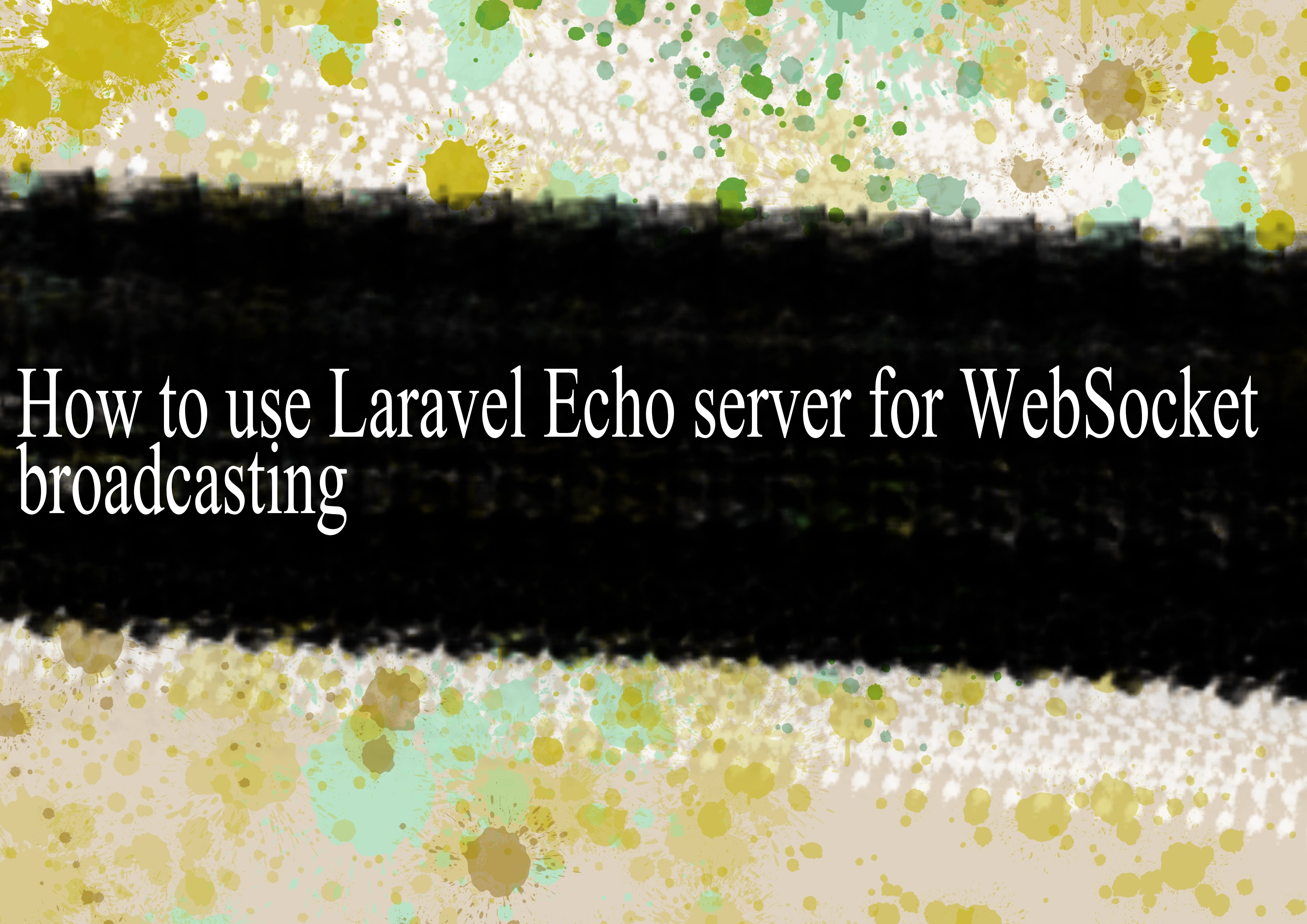How to use Laravel Echo server for WebSocket broadcasting

Laravel Echo Server is a powerful tool for broadcasting events over WebSockets in a Laravel application. It works seamlessly with Laravel Echo and allows you to build real-time applications efficiently. Here's a step-by-step guide on how to use Laravel Echo Server for WebSocket broadcasting:
Prerequisites:
1. Laravel Project: Make sure you have a Laravel project set up.
2. Node.js and NPM: Laravel Echo Server requires Node.js and npm. Make sure you have them installed.
Step 1: Install Laravel Echo Server
| npm install -g laravel-echo-server |
Step 2: Configure Laravel Echo Server
Run the following command to generate a configuration file:
| laravel-echo-server init |
This command will prompt you to answer a series of questions to set up your configuration. You'll need to provide your Laravel Echo Server details, including your Laravel Echo server host, port, database configuration, and more.
Step 3: Start Laravel Echo Server
Once configured, you can start the Laravel Echo Server:
| laravel-echo-server start |
Step 4: Update Laravel Broadcasting Configuration
In your Laravel project, make sure you have configured broadcasting in the config/broadcasting.php file. Update the broadcast key in your .env file to use the laravel-echo-server host and port:
BROADCAST_DRIVER=pusher PUSHER_APP_ID=your-app-id PUSHER_APP_KEY=your-app-key PUSHER_APP_SECRET=your-app-secret PUSHER_APP_CLUSTER=mt1 PUSHER_HOST=your-laravel-echo-server-host PUSHER_PORT=your-laravel-echo-server-port |
Step 5: Update Event Broadcasting
In your Laravel application, define events that you want to broadcast. Make sure your event classes implement the ShouldBroadcast interface. Here's an example:
use Illuminate\Contracts\Broadcasting\ShouldBroadcast; class ExampleEvent implements ShouldBroadcast { public $data; public function __construct($data) { $this->data = $data; } public function broadcastOn() { return new Channel('example-channel'); } } |
Step 6: Use Laravel Echo in Frontend
In your frontend code (JavaScript), make sure you include Laravel Echo and configure it to use the Laravel Echo Server:
import Echo from "laravel-echo"; window.Echo = new Echo({ broadcaster: 'pusher', key: process.env.MIX_PUSHER_APP_KEY, cluster: process.env.MIX_PUSHER_APP_CLUSTER, encrypted: true, wsHost: window.location.hostname, wsPort: 6001, // Laravel Echo Server port }); |
Now, you can listen for events and update your UI accordingly.
That's it! Your Laravel application should now be set up to use Laravel Echo Server for WebSocket broadcasting. Make sure to consult the Laravel Echo Server documentation for more advanced configuration options and troubleshooting.
=== Happy Coding :)
-
Popular Post
- How to optimize for Google's About This Result feature for local businesses
- How to implement multi-language support in an Express.js application
- How to handle and optimize for changes in mobile search behavior
- How to handle CORS in a Node.js application
- How to use Vue.js with a UI framework (e.g., Vuetify, Element UI)
- How to configure Laravel Telescope for monitoring and profiling API requests
- How to create a command-line tool using the Commander.js library in Node.js
- How to implement code splitting in a React.js application
- How to use the AWS SDK for Node.js to interact with various AWS services
- How to use the Node.js Stream API for efficient data processing
- How to implement a cookie parser middleware in Node.js
- How to implement WebSockets for real-time communication in React
-
Latest Post
- How to implement a dynamic form with dynamic field styling based on user input in Next.js
- How to create a custom hook for handling user interactions with the browser's device motion in Next.js
- How to create a custom hook for handling user interactions with the browser's battery status in Next.js
- How to implement a dynamic form with dynamic field visibility based on user input in Next.js
- How to implement a dynamic form with real-time collaboration features in Next.js
- How to create a custom hook for handling user interactions with the browser's media devices in Next.js
- How to use the useSWRInfinite hook for paginating data with a custom loading indicator in Next.js
- How to create a custom hook for handling user interactions with the browser's network status in Next.js
- How to create a custom hook for handling user interactions with the browser's location in Next.js
- How to implement a dynamic form with multi-language support in Next.js
- How to create a custom hook for handling user interactions with the browser's ambient light sensor in Next.js
- How to use the useHover hook for creating interactive image zoom effects in Next.js